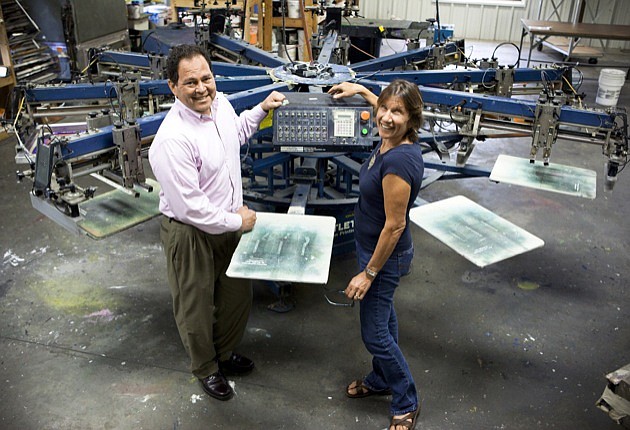REVIEW SUMMARY
What. Enterprise Zone program offers businesses corporate and sales tax credits for hiring zone residents.
Issue. Cost-effectiveness and economic benefits of program uncertain.
Impact. “The $64-million question.”
By The Numbers. Click here.
Florida was one of the first states to enable enterprise zones in 1982, and now the state may be one of the first to undo them.
Propped up with a palette of state and local tax exemptions and tax credits, enterprise zones seek to encourage economic development in blighted or economically depressed areas. Residents and businesses in places like East Tampa, part of downtown Fort Myers and Newtown in North Sarasota benefit from the tax incentives. (See map.)
But it may not be an easy decision to end the program for one big reason: No one's figured out if they really work.
Burt Von Hoff of the Office of Tourism, Trade and Economic Development, prepares the enterprise zone annual reports. Asked about how the zones should be better evaluated for outcomes and cost-effectiveness, Von Hoff answers, “That's the $64-million question. There's not a lot of good research.”
Buried near the back of the 162-page “Jobs Bill” — now on Gov. Charlie Crist's desk — is a single paragraph directing an agency of the Legislature to review and evaluate the enterprise zone program. That report from the Office of Program Policy Analysis and Government Accountability is due Jan. 11.
With the pending study combined with it scheduled to go away at the end of 2015 without legislative action, the program approaches the regulatory twilight zone.
Several bills aimed at expanding incentives for enterprise zones died in committees.
One explanation for not adding to the incentives: it costs the state tax revenue. A bill to create “super enterprise zones” with 100% tax breaks went nowhere. Several other bills found the same fate.
And with a $6 billion deficit projected for next year, state budgeters might be looking at those extra millions.
The question for state budget wonks is whether ending the program would be penny wise but pound-foolish.
Last year, $45.3 million in state incentives were handed out courtesy of taxpayers who make up the difference, though its uncertain if they get a return on that investment. Six years earlier, the subsidy totaled just $5.4 million.
Local incentives pushed the total for the 2008-09 fiscal year to $56.9 million. And that's down from the $62.8 million total the year before because local incentives were halved this past year.
There's now 57 zones scattered across the state, like so many holes on a dartboard, from Century in northwest Escambia County to South Dade. And the Legislature continues to allow the zones to expand boundaries.
The Gulf Coast has 10 zones, including two rural enterprise zones in Collier County — Immokalee and Everglades City. The other eight are urban zones including two in Hillsborough, two in Pinellas, two in Manatee, one in Sarasota and one in Fort Myers.
No clear evidence
While Florida was one of the first states with enterprise zones — Connecticut was the first in 1981, having taken the idea from the Untied Kingdom — the Sunshine State now has plenty of company.
In all, 43 states created enterprise zones. Three states — Kansas, Arkansas and South Carolina — have a statewide enterprise zone designation. By 1995, over half the states had enterprise zone programs.
Louisiana has the most zones, a staggering 1,740. New Mexico has but one. The U.S. now has more than 3,600.
A March 2004 state report concludes that Florida's program is similar to those of other states. And, on average, states designated 23 additional zones from 1995-2004.
Florida added 10 zones in the last nine years, but requests by Martin County and Palm Bay were denied by the Legislature this year. That's not stopping Columbia and Suwannee counties, which now seek approval.
Obviously, it's a popular program. But it's unclear whether the programs actually work after a nearly 30-year experiment.
Five years ago this month, an article in the trade magazine of the National Conference of State Legislatures concluded, “After two decades of enterprise zone operations in the United States, the effectiveness of these programs remains open for debate.”
Five years later, it's still an open question. According to the magazine story, while economic development officials and business owners who have benefited from all the tax credits and fee waivers praise the program, “Others, including a number of academics, point out that program reviews and econometric studies have not provided clear evidence that enterprise zones deliver the promised benefits.”
Such academic studies, according to a 2010 report of the Legislature's organization, “have found little evidence that zone programs would actually result in net job creation and increased community investment.”
South Carolina, with its statewide zone, doesn't appear to be getting much advantage from the zones. The state has the sixth highest unemployment rate in the nation at 11.6% after dropping a bit in April. One county's unemployment rate is 19.5%, and that's down from 21.5% in March.
Other incentives key
For the Tampa Urban Enterprise Zone, last year the Florida Department of Revenue approved $71,863 in jobs sales tax credits. One company getting the credits is Tampa T-Shirts, the brand name used in the Tampa market for Fast Lane Clothing Company, Inc. owned by Juan and Lori Davis.
The company moved to the zone in East Tampa a couple years ago from an area west of Raymond James Stadium near the airport. Incentives had much to do with the decision, but not so much the enterprise zone tax credits.
It's an S-corporation so they have to take the jobs credit against sales taxes. A C-corporation can take it against corporate income taxes if they choose, according to Lori Davis, the company's CFO. They hope to get $35,000 per job for seven jobs if they can keep the jobs for five years.
But actually receiving that much in credits may prove difficult.
During the boom, Tampa T-Shirts peaked at 35 employees, but went down to seven last year and are now back up to 10 at the start of 2010. As of last September, Fast Lane Clothing was receiving about $1,000 a quarter in jobs sales tax credits, a 30% rebate applied against monthly wages. Lori Davis says the company invested $1 million to build its new, larger facility, furnish it and buy equipment. That investment entitled them to the $5,000 building materials sales tax credit plus a sales tax credit on equipment.
But it was the incredible deal they got on the land that really made it all happen.
The city owned the “brownfield” land, meaning it had environmental problems, plus “it was loaded with liens” according to CEO Juan Davis. Fast Lane bought it using the city's community development block grant funds passed down from the federal government. In essence, the city used its grant money to get the property back on the tax roll.
The city also waived some of the transportation impact fees for construction. “If those [enterprise zone tax incentives] didn't exist, we would probably have still done it. It was still a good business decision,” Juan Davis says.
It's not just small companies playing the tax incentives game. Wal-Mart and Walgreens are also receiving tax credits.
But for Harriet Stone, Tampa's senior redevelopment counselor who oversees the city's enterprise zone program, it's not working out too well. Despite 2,229 new enterprise zone jobs last year, she's losing hers. Stone's position is being cut as a result of budget problems.
Condos losing big credit
Across the bay in St. Pete, it's not much better for Jon Fleming, who administers that city's enterprise zone program. Fleming spends about 10%-20% of his time dedicated to the program.
“I actually don't really have anything on my desk right now,” he says when asked what projects he's assisting with. In early May, Fleming processed applications for Ovation Tower, a large high-end, bayfront condominium taking advantage of the building materials tax credit.
The timing was right for the condo developers. Beginning July 1, the building materials tax credit for condos goes away, a fact few may realize, according to Fleming.
A few short years ago condo developers started taking advantage of the credit and last year it was $31 million of the $45.3 million, 68% of the approved state tax incentives. In 2002, it was about $534,000, or less than one-tenth of the total credits at that time.
It's uncertain how the Legislature will act on the study, but one Gulf Coast legislator expected to have a say in the outcome is Sen. Mike Bennett, R-Bradenton.
Bennett chairs the Policy and Steering Committee on Commerce and Industry and the Community Affairs Committee plus sits on the Finance and Tax and budget committees. He sees the conflicting goals: trying to balance job creation incentives with state revenue needs while also trying to keep taxes under control.
“It's kind of a crap shoot,” Bennett says. “A lot of people say, 'Why should I pay for an enterprise zone? I've got to pay my taxes.' I think that's pretty much your story. Are these things truly generating any money?”
We should all know more come Jan. 11, 2011 when the state report is due.
State Incentives
Below is a list of incentives provided by the state of Florida for companies locating in enterprise zones:
• Jobs tax credit against sales tax
• Jobs tax credit against corporate Income tax
• Property tax credit against corporate income tax
• Sales tax refund for building materials
• Sales tax refund for business machinery and equipment
• Sales tax exemption for electrical energy
• Community contribution tax credit program
Local Incentives
In addition to state incentives some local governments offer the following incentives for enterprise zones:
• Reduction of occupational license fees
• Ad valorem tax exemption on improved property
• Local option economic development property tax exemption
• Utility tax abatement
• Facade/commercial rehabilitation grants (loans)
• Local funds for capital projects
• Reduced impact fees, building permit fees or land development fees
• Reduction of specific local government regulations in the area






